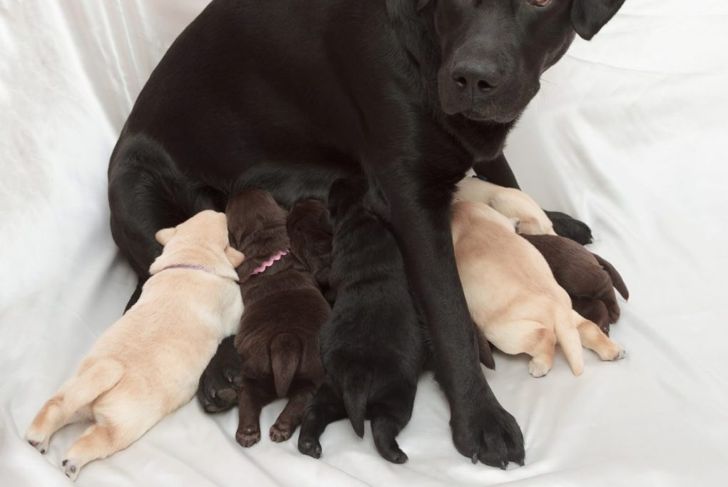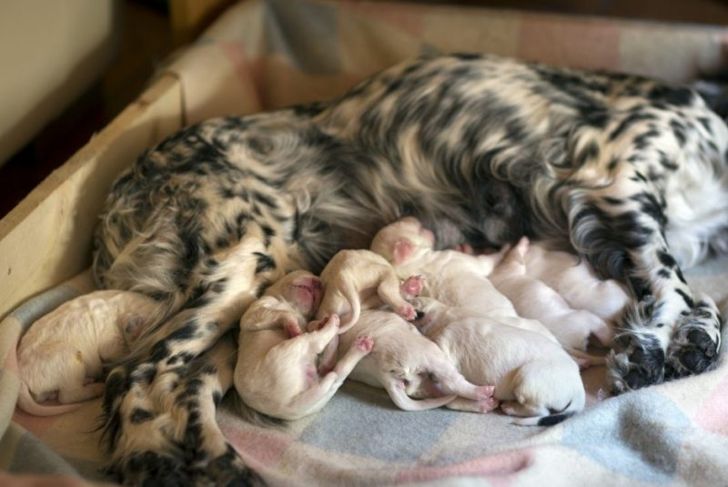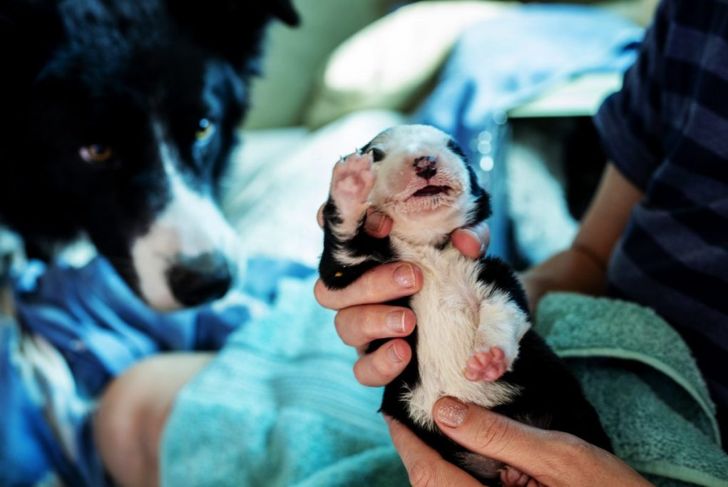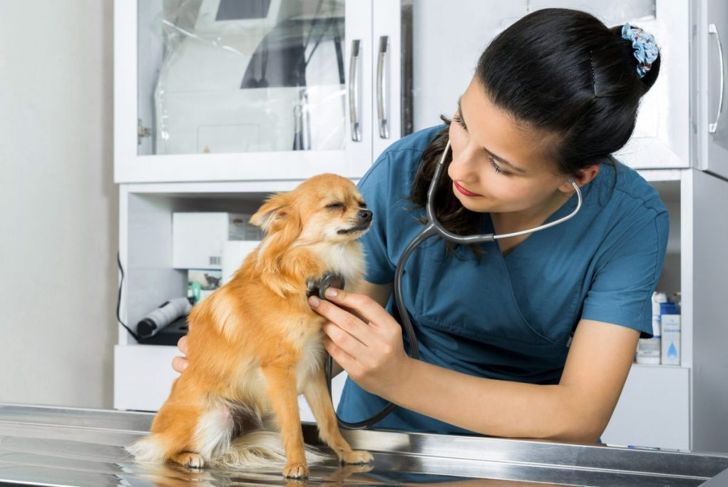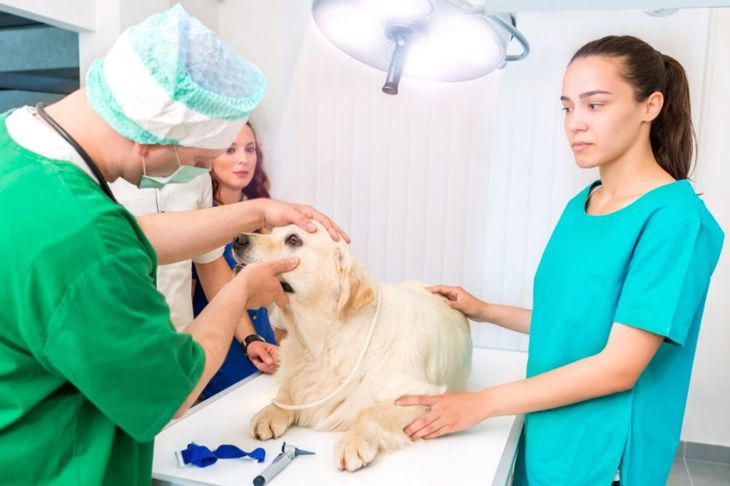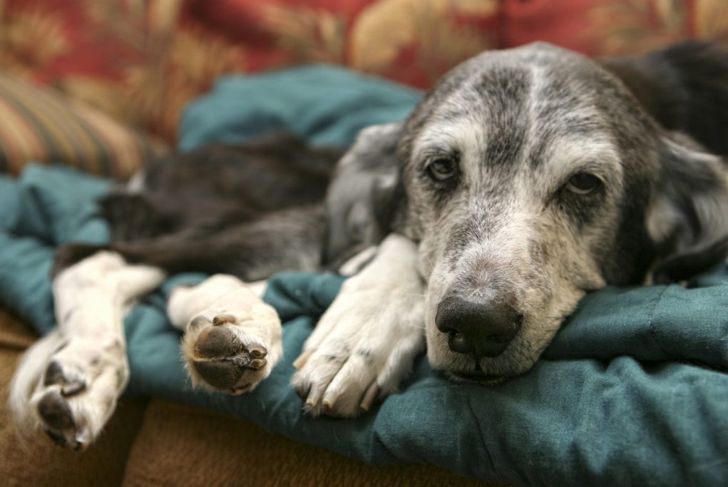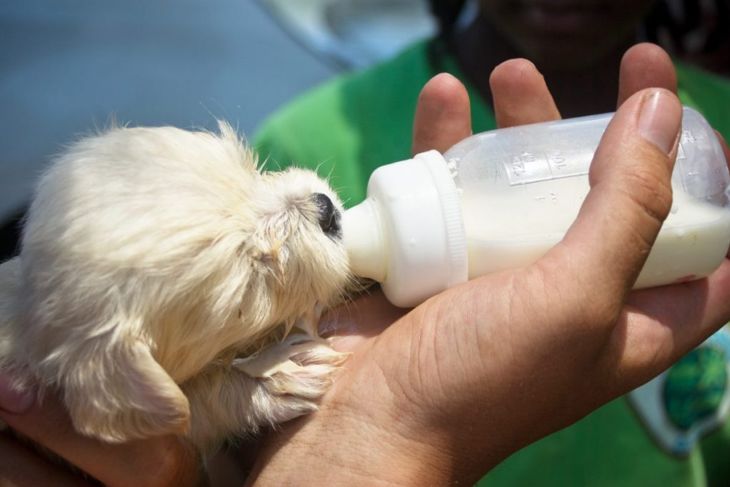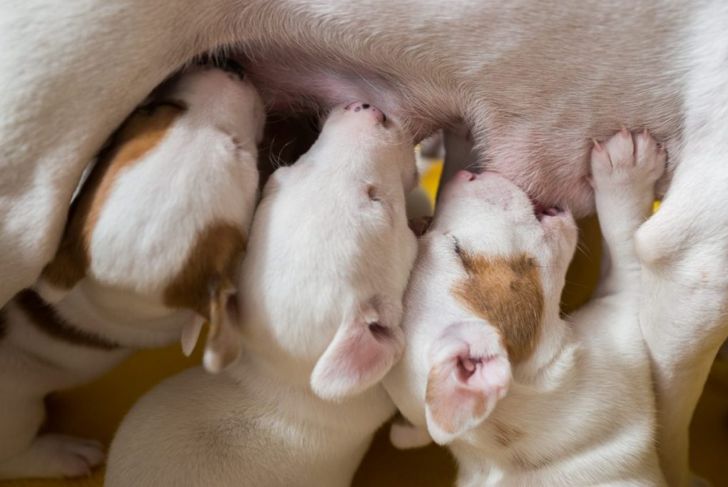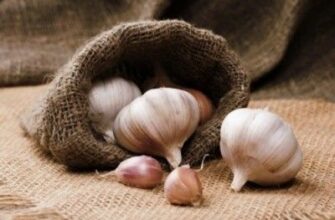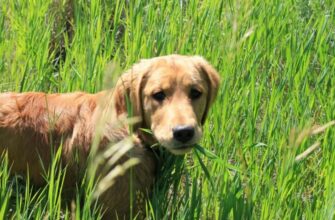Mastitis is the medical term for inflammation of a mammary gland, or breast. Male and female dogs can develop mastitis, but it almost always occurs in mother dogs with nursing puppies. A mother-dog develops milk near the end of her pregnancy. Her body is under a great deal of stress from carrying a litter of puppies, giving birth, and nursing babies. Mastitis can be fatal for nursing mothers if it is not noticed and treated early.
Early Symptoms of Mastitis
Nursing puppies that do not grow or hungry puppies can be the first sign of mastitis. Minor swelling of the nipples may be the only noticeable sign from the mother dog at this point because the infection has not progressed far enough to cause illness or pain. The infection progresses quickly once it begins. Mammary glands become swollen, warm to the touch, and appear red or purple.
Advanced Symptoms of Mastitis
Mammary glands often develop ulcers and sores. The sores scab over, but the infection is trapped under them. Scabs are not signs of healing. Blood or pus may be visible in milk from infected mammary glands. The milk could also be thick or cloudy. The mother dog becomes noticeably ill if mastitis is not treated early. The mammary gland turns dark purple or black because infection and insufficient blood circulation kill tissue in and around the gland. The mother dog exhibits lethargy, fever, vomiting, and poor appetite. Dogs develop sepsis after the bacterial infection enters the bloodstream.
Bacterial Causes of Mastitis
An injury or scratch on the nipple gives bacteria an entry point. A mother dog living in unsanitary conditions may develop mastitis without an injury or wound. Bacteria infect a wound on the teat or enter the teat itself. Once the bacteria gain entry to the teat, the infection travels upwards through the milk duct into the mammary gland itself.
Mastitis Without Infection
Galactostasis refers to mammary gland engorgement without an infection. This means that the mammary gland becomes inflamed in the absence of bacteria. Trauma to the mammary gland itself or prolonged milk accumulation leads to galactostasis. This type of mastitis develops when puppies are weaned abruptly or die. The mammary glands still produce milk, but milk builds up in the glands because puppies are not nursing.
Diagnosis
Veterinarians thoroughly examine dogs and perform several tests to diagnose and treat mastitis. Needle aspiration pulls fluid from the infected teat or gland so the veterinarian can examine milk or discharge under a microscope. A bacterial culture of the fluid reveals the type of bacteria and the correct antibiotic to treat the infection. A complete blood count gives the veterinarian an idea of the mother dog’s health overall.
Veterinary Treatment
Most cases of mastitis clear up with oral antibiotics that owners give at home. This lets the dog stay at home where she is comfortable with her puppies. Warm water compresses help drain discharge or milk from infected glands. Dogs with advanced cases of mastitis are hospitalized with intravenous fluid and antibiotics. Sometimes veterinarians surgically remove severely infected mammary glands and dead tissues.
Caring For Mastitis at Home
Veterinarians sometimes recommend hand-milking infected mammary glands and teats every six hours. Massaging the inflamed glands expresses milk or discharge to relieve pain and discomfort. It also improves circulation in the area, so healing progresses faster. Cabbage leaf compresses to relieve pain and inflammation. A bandage or fitted t-shirt holds cabbage leaves against the infected mammary gland. The compress stays in place for 2-4 hours with 3-4 hours in between applications.
Caring For Puppies
Puppies can nurse in most cases of mastitis because only 1-2 glands are affected. A veterinarian decides if nursing from affected teats is safe or not. Owners need to cover and hand-milk affected teats so puppies can not nurse from them when the milk is unsafe. A mother dog with advanced mastitis or sepsis can not care for her puppies. Owners have to feed puppies with milk supplements carefully. Puppies can develop pneumonia quickly if they inhale milk during hand-rearing. Mother dogs nursing their own litters may adopt and care for puppies from another litter as well. This is a much safer option than hand-rearing, although access to a second nursing mother is not always feasible.
Risk Factors
Anything that weakens a mother dog’s immune system or negatively impacts her health makes her more susceptible to mastitis. Risk factors include illness, injury, or parasites such as worms and fleas. Fear, stress, and malnutrition are risk factors too. A nursing mother needs a secure location where she feels safe and comfortable. She also needs plenty of healthy food with well-balanced nutrition to avoid depleting her body’s resources to nourish puppies.
Prevention
Proper precautions drastically reduce the risk of mastitis. Change bedding frequently, and keep the area around the mother dog and puppies clean. Check teats twice a day for swelling or firmness. Gently express milk from a different teat each day, and contact a veterinarian immediately at the first sign of infection. Nursing mothers with small litters are at risk of galactostasis. Owners can help by watching puppies nurse and gently moving them around, so they nurse from every teat. A teat that is consistently missed during nursing can accumulate too much milk.

 Home
Home Health
Health Diet & Nutrition
Diet & Nutrition Living Well
Living Well More
More
